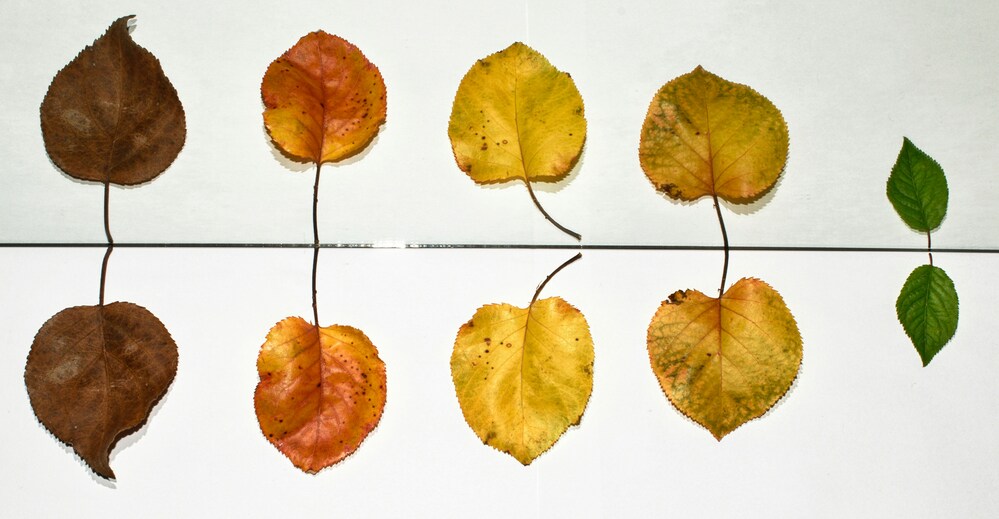which statement best explains what happens to a leaf when it has lost much-needed water?

Introduction:
Leaves are vital organs in plants, playing a crucial role in various physiological processes essential for the plant’s survival and growth. One of the primary functions of leaves is to facilitate photosynthesis, the process by which plants convert sunlight into energy. Water is a fundamental component in this process, as it serves as a medium for nutrient transport, maintains turgor pressure, and supports cell structure.
The Role of Water in Leaves:
Water is absorbed by the plant’s roots from the soil and transported through the stem to the leaves. In leaves, water is involved in several critical processes:
- Photosynthesis:
- Water is a key component in the photosynthetic process. It participates in light-dependent reactions, where water molecules are split to release oxygen and provide electrons to form energy-rich molecules.
- The oxygen produced during photosynthesis is released into the atmosphere, contributing to the oxygen we breathe.
- Nutrient Transport:
- Water serves as a medium for the transport of minerals and nutrients from the soil to the leaves. This upward movement of water, known as transpiration, is driven by various forces, including capillary action and evaporation.
- Turgor Pressure:
- Turgor pressure, maintained by the influx of water into plant cells, provides structural support to the cells. When cells are adequately hydrated, they become turgid, maintaining the overall rigidity of the leaf.
Transpiration and Water Loss:
Transpiration is a crucial process in plants where water is taken up by the roots, transported through the xylem vessels, and ultimately released into the atmosphere through small pores called stomata on the leaf surface. This process is essential for maintaining water balance, nutrient transport, and temperature regulation in plants.
- Stomatal Regulation:
- Stomata are microscopic openings primarily located on the underside of leaves. They allow for the exchange of gases, such as oxygen and carbon dioxide, essential for photosynthesis.
- The opening and closing of stomata are regulated by guard cells. When a plant experiences water stress, the guard cells may respond by closing the stomatal pores to reduce water loss through transpiration.
- Wilting:
- The loss of water from plant cells can lead to a decrease in turgor pressure. As turgor pressure diminishes, cells lose their rigidity, and the leaf wilts. Wilting is a visible sign of water stress and an attempt by the plant to minimize further water loss.
Consequences of Water Loss in Leaves:
Several physiological and morphological changes occur when a leaf loses much-needed water, reflecting the plant’s attempt to cope with water stress.
- Reduced Photosynthesis:
- Water is a key component in the light-dependent reactions of photosynthesis. Insufficient water availability can lead to a decrease in the rate of photosynthesis, limiting the plant’s ability to produce energy and carbohydrates.
- Stomatal Closure:
- In response to water scarcity, plants may close their stomata to conserve water. While this reduces water loss, it also limits the entry of carbon dioxide needed for photosynthesis. The balance between water conservation and gas exchange is a crucial adaptation.
- Yellowing and Chlorosis:
- Prolonged water stress can lead to chlorosis, a condition characterized by the yellowing of leaves. This is often a result of a decrease in chlorophyll content, the pigment responsible for the green color of leaves and essential for photosynthesis.
- Cell Damage and Senescence:
- Severe dehydration can cause damage to plant cells. In extreme cases, prolonged water stress may lead to irreversible damage or even cell death. This can accelerate the senescence (aging) of leaves, affecting their overall function.
Plant Adaptations to Water Stress:
Plants have evolved various adaptations to cope with water stress and optimize their water use efficiency.
- Xerophytes:
- Xerophytic plants are adapted to arid environments and have developed reduced leaf surface area, thick cuticles, and specialized water storage tissues to minimize water loss.
- Drought Avoidance:
- Some plants exhibit drought avoidance strategies, such as early flowering or going dormant during dry periods. These adaptive mechanisms allow them to survive in environments with limited water availability.
- Root Architecture:
- The root system of plants can adapt to explore and extract water from different soil depths. Some plants develop deep taproots, while others have extensive shallow root systems to maximize water uptake.
Conclusion:
In conclusion, the loss of much-needed water from a leaf triggers a cascade of physiological responses and adaptations in plants. From the microscopic regulation of stomata to the visible wilting and yellowing of leaves, these responses reflect the plant’s intricate mechanisms for coping with water stress. Understanding these processes is crucial for appreciating the resilience and adaptability of plants in various environmental conditions. As we continue to study and explore the intricacies of plant-water interactions, we gain insights not only into plant physiology but also into broader ecological patterns and the interconnectedness of living organisms with their environments.




